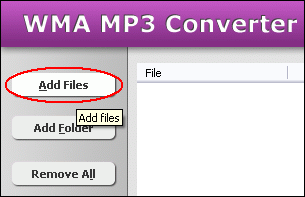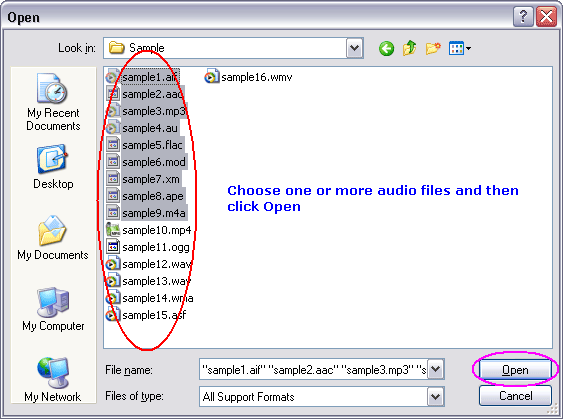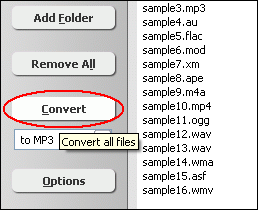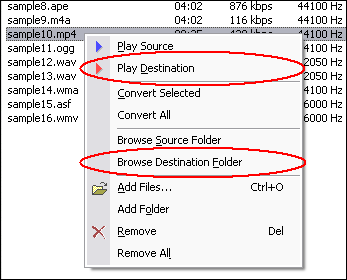MXF to ASFConvert MXF to ASF, MXF to ASF Converter |
 |
| Home | Getting Started | Download | Buy Now! | Screen Shots | FAQ | Support | Contact |
MXF to ASF Converter converts MXF to ASF. The software is an ALL-IN-ONE audio converter that supports more than 100 audio and video files. MXF to ASF Converter supports batch conversion and is full compatible with Vista and Windows 7.
What is MXF? MXF has been designed by the leading players in the broadcast industry - with an enormous amount of input from the user community - to ensure that the format really meets their demands. It is being put forward as an Open Standard which means it is a file transfer format that is openly available to all interested parties. It is not compression-scheme-specific and it simplifies the integration of systems using MPEG and DV as well as future, as yet unspecified, compression strategies. This means that the transportation of these different files will be independent of content, and will not dictate the use of specific manufacturers¡¯ equipment. Any required processing can simply be achieved by automatically invoking the appropriate hardware or software codec. However, MXF is designed for operational use and so all the handling processes are seamless to the user. It just works quietly in the background. Besides offering better interoperability - working with video and audio between different equipment and different applications - its other major contribution is the transport of metadata. By developing MXF from the beginning as a new file format, considerable thought has gone into the implementation and use of metadata. Not only is this important for the proper functioning of MXF files, it will also enable powerful new tools for media management as well as improving the content-creation workflows by eliminating repetitive metadata re-entry. The changing technologies in television production, and in transmission to the viewers, means that the traditional methods for moving the content - programme video and audio - within studios is changing too. Not only is there far greater use of computers and IT-related products such as servers, but also the reliance on automation and the re-use of material have expanded. Besides the need to carry metadata, file transfers are needed to fit in with computer operations and they must be capable of being streamed for real-time operations. The development of the Material eXchange Format (MXF) is a remarkable achievement of collaboration between manufacturers and major organizations such as Pro-MPEG, the EBU and the AAF Association. It establishes interoperability of content between various applications used in the television production chain. This leads to operational efficiency and creative freedom through a unified networked environment. MXF is a "container" or "wrapper" format which supports a number of different streams of coded "essence", encoded with any of a variety of codecs, together with a metadata wrapper which describes the material contained within the MXF file. MXF was developed to carry a subset of the Advanced Authoring Format (AAF) data model, under a policy known as the Zero Divergence Directive (ZDD). This enables MXF/AAF workflows between non-linear editing (NLE) systems using AAF and cameras, servers, and other devices using MXF. What is ASF? ASF is based on serialized objects which are essentially byte sequences identified by a GUID marker. The format does not specify how (i.e. with which codec) the video or audio should be encoded; it just specifies the structure of the video/audio stream. This is similar to the function performed by the QuickTime, AVI, or Ogg container formats. One of the objectives of ASF was to support playback from digital media servers, HTTP servers, and local storage devices such as hard disk drives. The most common filetypes contained within an ASF file are Windows Media Audio (WMA) and Windows Media Video (WMV). Note that the file extension abbreviations are different from the codecs which have the same name. Files containing only WMA audio can be named using a .WMA extension, and files of audio and video content may have the extension .WMV. Both may use the .ASF extension if desired. ASF files can also contain objects representing metadata, such as the artist, title, album and genre for an audio track, or the director of a video track, much like the ID3 tags of MP3 files. It supports scalable media types and stream prioritization; as such, it is a format optimized for streaming. The ASF container provides the framework for digital rights management in Windows Media Audio and Windows Media Video. An analysis of an older scheme used in WMA reveals that it is using a combination of elliptic curve cryptography key exchange, DES block cipher, a custom block cipher, RC4 stream cipher and the SHA-1 hashing function. ASF container-based media is usually streamed on the internet either through the MMS protocol or the RTSP protocol. MXF to ASF Related Topics: AIFF to ASF, ADTS to ASF, OMA to ASF, VQF to ASF, SHN to ASF, M4B to ASF, WAVE64 to ASF, SPX to ASF, DTS to ASF, OGG to ASF, AC3 to ASF, MKA to ASF, F4A to ASF, GSM to ASF, IT to ASF, RMJ to ASF, FLAC to ASF, APE to ASF, RAM to ASF, AU to ASF, M4A to ASF, UMX to ASF, MTM to ASF, ULAW to ASF, CDA to ASF, AWB to ASF, TTA to ASF, RMI to ASF, SOL to ASF, NSA to ASF
|
| Home | Getting Started | Download | Buy Now! | Screen Shots | FAQ | Support | Contact | Links |
| Copyright © 2007-2014 Hoo Technologies All rights reserved. Privacy Policy |





